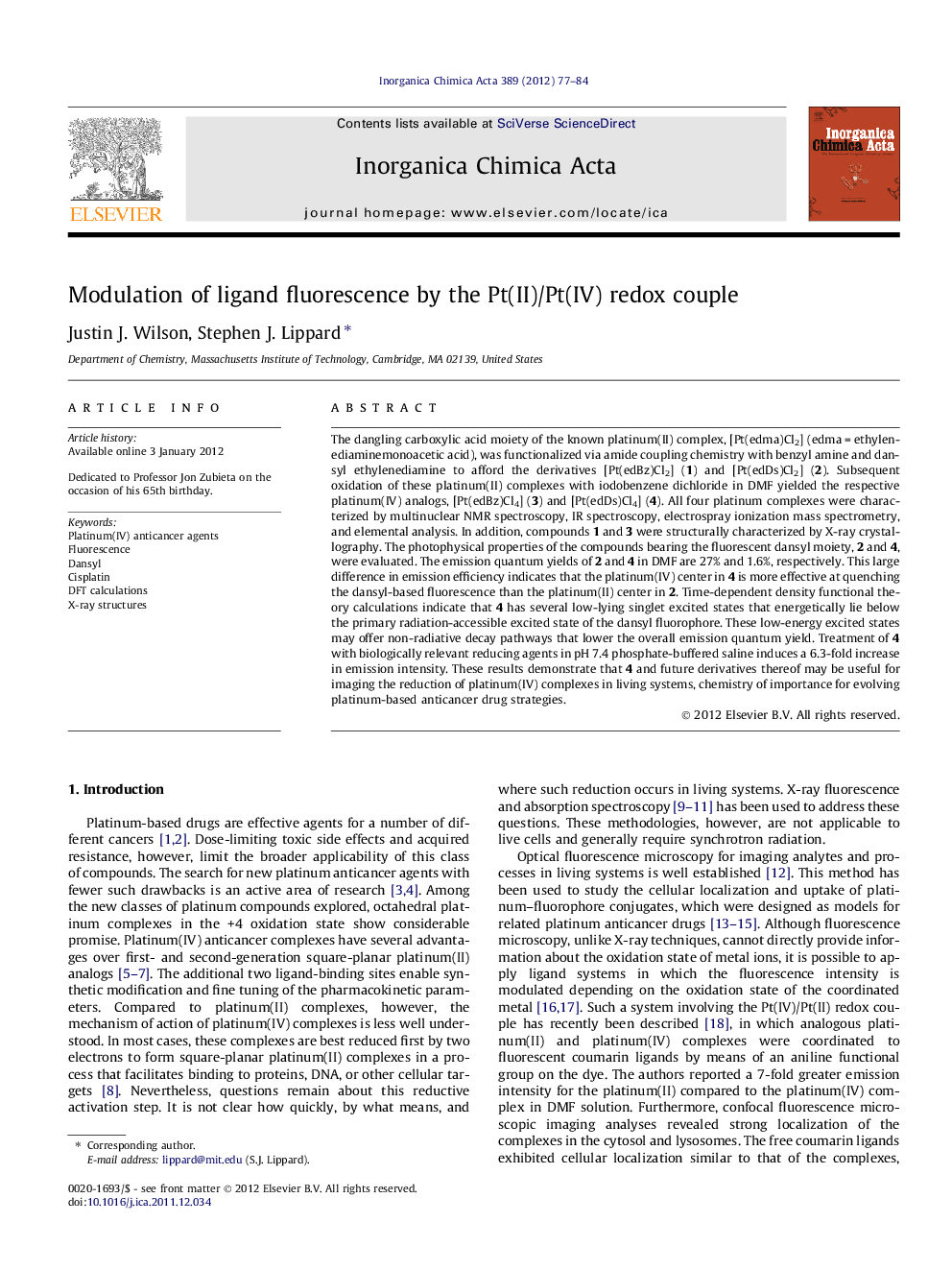| کد مقاله | کد نشریه | سال انتشار | مقاله انگلیسی | نسخه تمام متن |
|---|---|---|---|---|
| 1310793 | 1499198 | 2012 | 8 صفحه PDF | دانلود رایگان |

The dangling carboxylic acid moiety of the known platinum(II) complex, [Pt(edma)Cl2] (edma = ethylenediaminemonoacetic acid), was functionalized via amide coupling chemistry with benzyl amine and dansyl ethylenediamine to afford the derivatives [Pt(edBz)Cl2] (1) and [Pt(edDs)Cl2] (2). Subsequent oxidation of these platinum(II) complexes with iodobenzene dichloride in DMF yielded the respective platinum(IV) analogs, [Pt(edBz)Cl4] (3) and [Pt(edDs)Cl4] (4). All four platinum complexes were characterized by multinuclear NMR spectroscopy, IR spectroscopy, electrospray ionization mass spectrometry, and elemental analysis. In addition, compounds 1 and 3 were structurally characterized by X-ray crystallography. The photophysical properties of the compounds bearing the fluorescent dansyl moiety, 2 and 4, were evaluated. The emission quantum yields of 2 and 4 in DMF are 27% and 1.6%, respectively. This large difference in emission efficiency indicates that the platinum(IV) center in 4 is more effective at quenching the dansyl-based fluorescence than the platinum(II) center in 2. Time-dependent density functional theory calculations indicate that 4 has several low-lying singlet excited states that energetically lie below the primary radiation-accessible excited state of the dansyl fluorophore. These low-energy excited states may offer non-radiative decay pathways that lower the overall emission quantum yield. Treatment of 4 with biologically relevant reducing agents in pH 7.4 phosphate-buffered saline induces a 6.3-fold increase in emission intensity. These results demonstrate that 4 and future derivatives thereof may be useful for imaging the reduction of platinum(IV) complexes in living systems, chemistry of importance for evolving platinum-based anticancer drug strategies.
A platinum(IV) complex bearing a tethered dansyl fluorophore elicits a turn-on fluorescent response upon conversion to Pt(II) with biological reducing agents.Figure optionsDownload as PowerPoint slideHighlights
► Fluorescent complexes of platinum(II) and platinum(IV) were synthesized.
► These complexes were characterized by multinuclear NMR spectroscopy.
► The Pt(IV) complex is much less emissive than the Pt(II) complex.
► Reduction of the Pt(IV) complex elicits a 6.3-fold emission turn-on.
► This work provides a proof of principle for studying Pt(IV) reduction in live cells.
Journal: Inorganica Chimica Acta - Volume 389, 1 July 2012, Pages 77–84